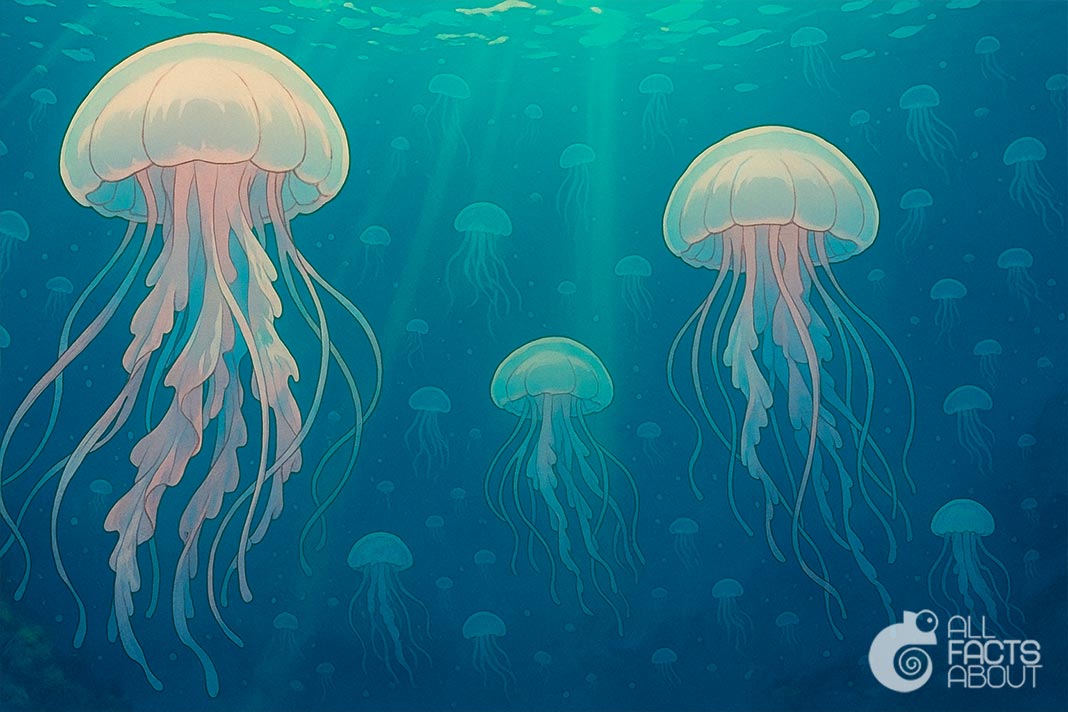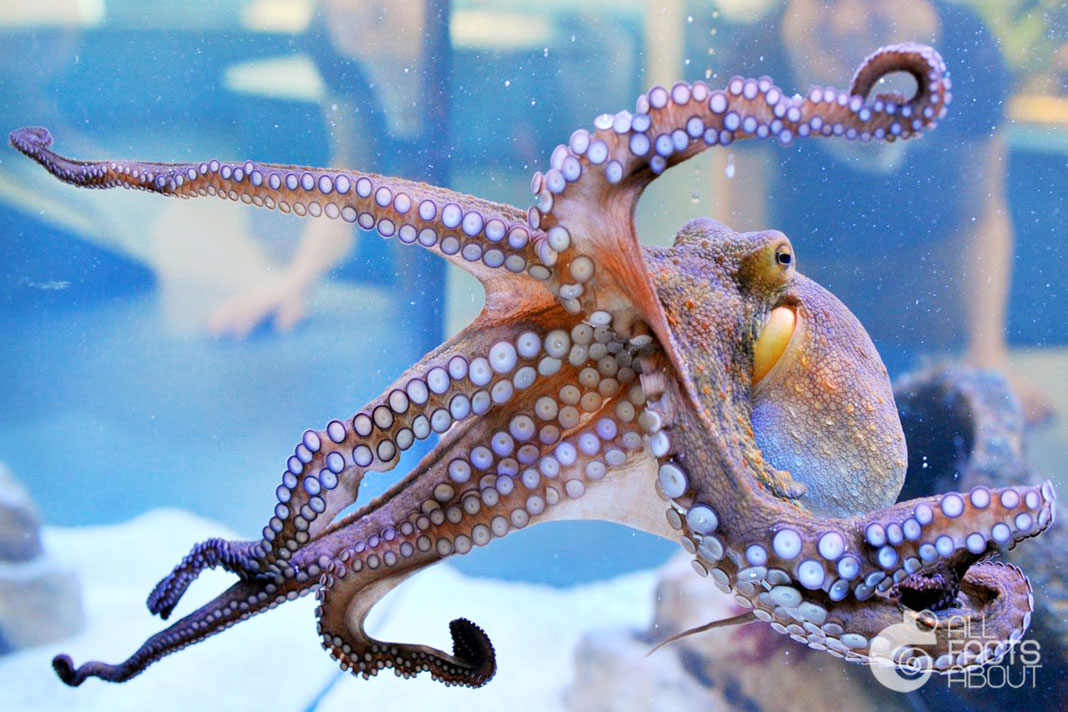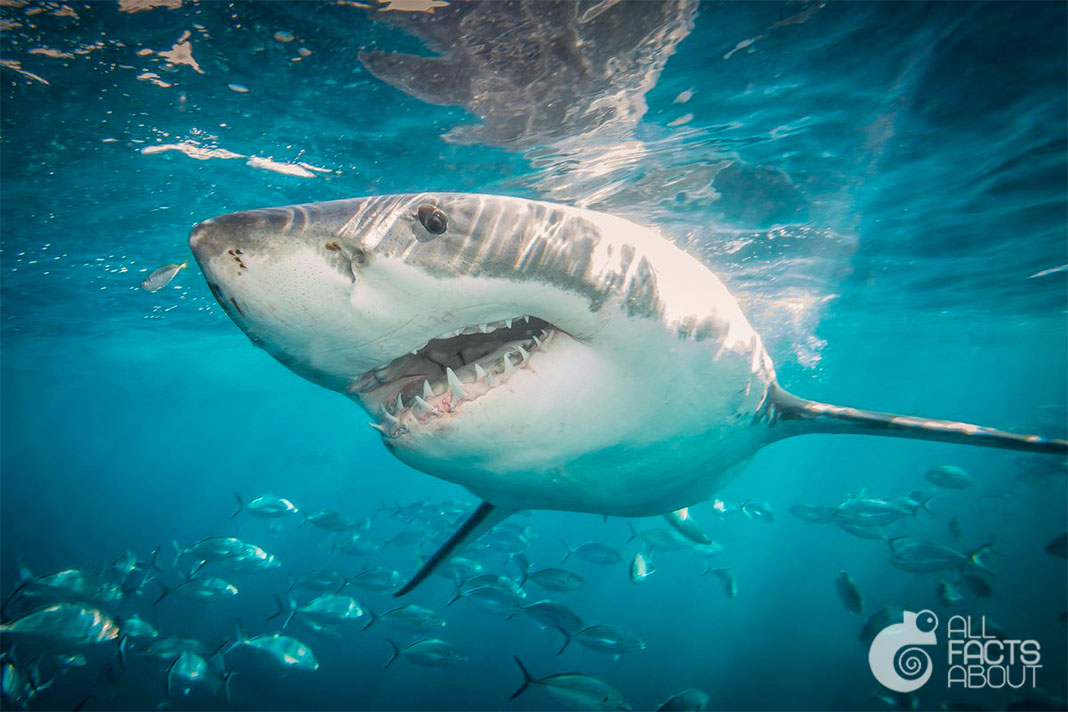Jellyfish may seem like alien creatures from another world, and in many ways, they are! With no brains, hearts, or bones, jellyfish have been drifting through Earth’s oceans for hundreds of millions of years. Here are some amazing facts about these strange and fascinating sea animal.
1. Jellyfish live in all oceans, from tropical to polar regions. While most prefer saltwater, some species, like Craspedacusta sowerbyi, can live in freshwater lakes and ponds, making jellyfish one of the most widespread marine animals on Earth.
2. Those living near the ocean surface are usually clear or pale, which helps them stay hidden from predators. In deeper waters, some species can glow in red, green, or purple to attract prey or confuse predators.
3. Jellyfish have existed for over 500 million years, making them older than dinosaurs, sharks, and even trees. Fossil evidence shows that jellyfish have remained largely unchanged for hundreds of millions of years.
4. Jellyfish come in a wide range of sizes. Adults of some species are small enough to fit on a fingertip, while others are true giants with tentacles that can stretch over 30 meters long.
5. Jellyfish have no brain, heart, or central nervous system. Instead, they rely on a simple network of nerves called a “nerve net” to detect stimuli and control movement.
6. A jellyfish protects itself by stinging, using special cells on its tentacles. These tentacles can still sting even after being detached from the body.
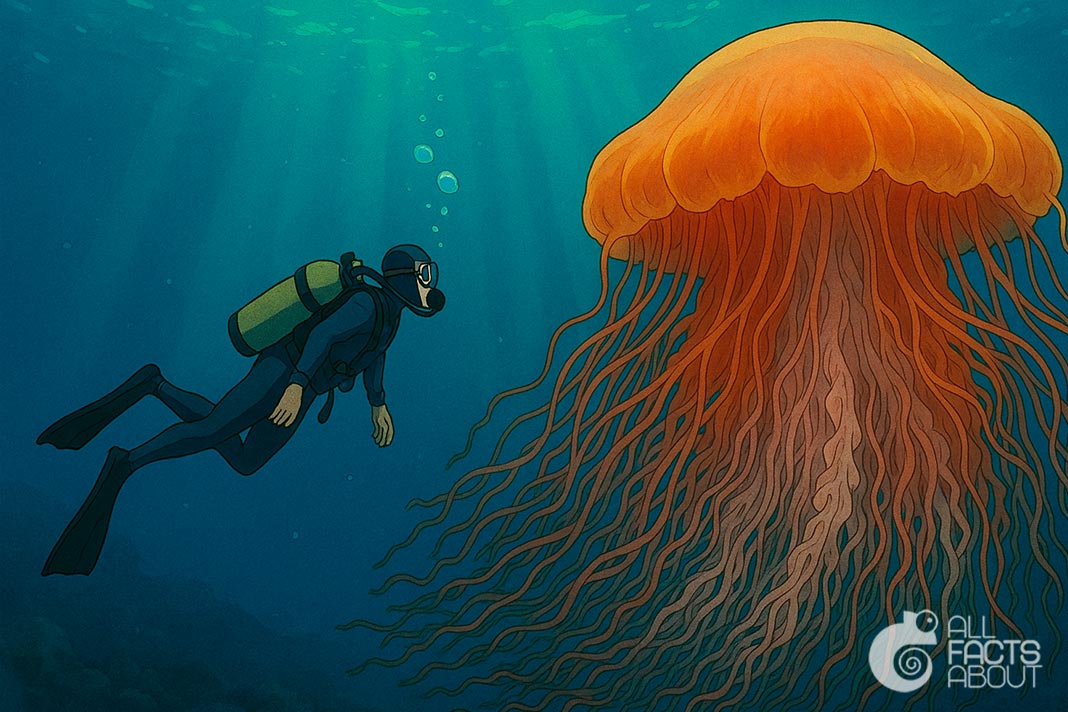
The lion’s mane jellyfish (Cyanea capillata) is the world’s largest jellyfish.
8. Despite their delicate appearance, jellyfish are among the very few creatures that can adapt to ocean “dead zones” — areas with low oxygen levels and high pollution.
9. The most venomous jellyfish in the world is the sea wasp (Chironex fleckeri), a type of box jellyfish found near Australia. Just one adult has enough venom to kill up to 50 people, making it one of the deadliest creatures in the ocean.
10. The jellyfish Cephea cephea, also known as the crown jellyfish, has a dome-shaped bell that resembles a royal crown. An interesting fact is that this jellyfish is bioluminescent, meaning it glows in the dark. Despite its impressive size and appearance, it is harmless to humans.
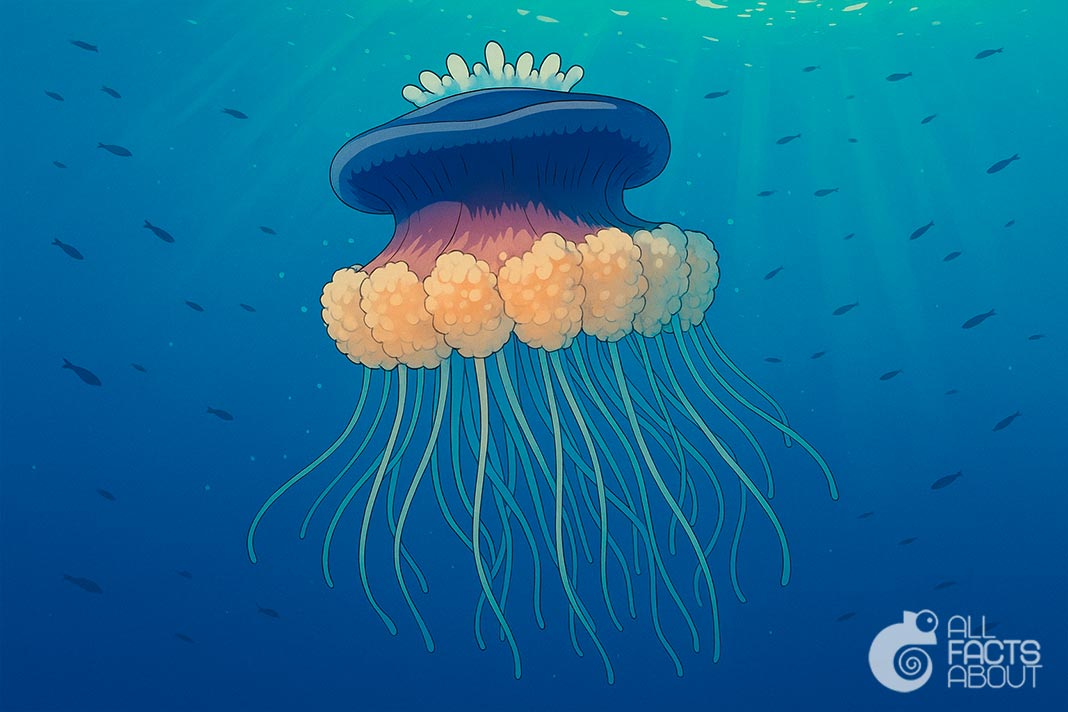
The jellyfish Cephea cephea (crown jellyfish) looks and glows like a royal jewel.
12. The jellyfish known as the “immortal jellyfish” (Turritopsis dohrnii) has a remarkable ability to potentially live forever. When it gets injured or ages, it can transform its cells back to an earlier stage of life and begin its life cycle anew. This unique process makes it the only known creature that might be biologically immortal.
13. The Cassiopea jellyfish, often called the “upside-down jellyfish,” rests with its bell facing downward and tentacles upward. This unique posture allows symbiotic algae in its tissues to photosynthesize sunlight and provide nutrients to the jellyfish.
14. Atolla wyvillei, known as the “alarm jellyfish,” uses flashing bioluminescence to defend itself. When threatened, it emits pulsing blue lights to attract larger predators, hoping they’ll attack its attacker and allow it to escape.
15. In som Asian countries, jellyfish are considered a delicacy. In China, Japan, Korea, and Malaysia, certain species are prepared by drying, salting, or marinating, then served with rice, vegetables, or in cold salads for their unique texture and mild flavor.

